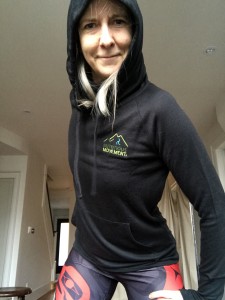January 16, 2019
Are You Strong Enough Yet?
By Carol Robbins
When I was a Pilates teacher, I would get client referrals from doctors, PTs, chiropractors, etc., who would tell their patients they needed a stronger “fill in the blank” (usually “core”). In fact, I worked at a PT office in an in-house Pilates studio for a while, and all the patients were encouraged to take Pilates after the rehab portion was complete (particularly if their insurance covered it).
I had a history of chronic lower back pain and was told to “strengthen my core.” Maybe you’ve been told something similar, or you say similar things to your clients.
So, let’s have a look at that statement.
First: Define “core”. What does that word mean to you?
Second: Define “back”. Does that mean “spine” or something else?
Third: How does the “core” support the “back” (using your definitions)? If the core was weak, would that affect the other side of the body and how?
Fourth: What is strength and how is it measured (in other words, how do you know something is weak)? How do you know how strong you need to be, or how strong is strong enough?
- Is it when the troublesome symptoms go away?
- If your symptoms persist, are you just not strong enough?
- If you are too weak to support your own back or spine, is strength exercise always the answer?
I never understood why strength was required for me to help my back, I just “bought” that logic because people in authority told me it was so. And when my back did not get better, I thought I was just not strong enough – I needed to do more Pilates, do it more often, at a more advanced level – because clearly what I was doing was not enough.
There are ways to determine if a muscle is strong enough. A muscle needs to allow full range of motion of its associated joints. Its resting length should allow those joints to be neutral without muscle tension (not stretching). When the muscle contracts, it should take that joint through full range of motion (which also requires yielding of opposing (antagonist) muscles). If the opposing muscles can’t yield, the contracting muscle needs to work against the weight of the body part in gravity plus that added tension. What would appear to be weakness is, in fact, a short antagonist muscle.
Now let’s talk abs. Your abs need to be strong enough to … what? What is their function? Most people would say they move the spine around. They flex it, assist in rotation, and assist resisting extension. So, if they are weak, the spine will not be able to do those things? Or not do them fully? Would strengthening them enable increased flexion and rotation? Wait, isn’t too much flexion the issue in most people?
And what about yield – if they have sufficient yield, how would that be measured? If the abdominal muscles yield as much as they should, what structures would that allow to move – and if they don’t, how does that affect those structures? Oh – is “yield” the same as “stretch”?
Frustrated? That’s a lot of questions.
 So then, if you have a client who comes in and says “I need stronger ‘X’” – what’s your response? Do you just give them exercises to strengthen their X? Or do you test the strength and, if so, how? I educate people a bit on muscle physiology, and the differences between concentric and eccentric contractions, yield and stretch. Then we set about measuring the various parts of the body that could also contribute to the X problem. Function is noted. Some(most) times concentric strengthening is not appropriate.
So then, if you have a client who comes in and says “I need stronger ‘X’” – what’s your response? Do you just give them exercises to strengthen their X? Or do you test the strength and, if so, how? I educate people a bit on muscle physiology, and the differences between concentric and eccentric contractions, yield and stretch. Then we set about measuring the various parts of the body that could also contribute to the X problem. Function is noted. Some(most) times concentric strengthening is not appropriate.
In terms of the abdominals, the relationship between the ribs and pelvis must be determined, but the pelvis must be measured not via its relationship to the ground, but by the relationship to the femur, and the femur must be measured via its relationship to the ground (via the tibia/fibula)! Assessing abdominal strength requires a whole body solution and not just working on the abdominals in isolation using various exercises designed to “strengthen” them (whatever that means).
To summarize, if a client has a chronic problem, you need to know if the muscles associated are short or long as determined by their bony attachments in relation to gravity and the other body parts. The solution is not just “stretch the short, strengthen the long” – though that seems logical and has been our methodology for years. Muscles can be shorter (or longer) than necessary to function optimally and still be at their normal resting length through a process of “adaptation” – a cellular-level process of the central nervous system that recognizes incorrect joint position and adapts the associated muscles to be that length “permanently” .
This is why one hour of Pilates (or whatever exercise you do) a day is just not enough. One hour a day is not enough to counter twenty-three during which you can be constantly (re)creating your old environment. Four percent of your day is too small of a percentage of time for those muscles to experience different scenarios. Your best intentions will not create change at the cellular level; only consistent use of those ranges will.
Now I’m going to get ready for the emails that say, “but my client got better with strength training!” and it’s true, there are exceptions. As long as you know what category your client is in, you can prescribe exercises accurately. What if “all” your clients improve?
- For how long do they improve?
- Do their symptoms persist but at a lower level or less often?
- Do they reappear when they stop doing Pilates (good for your job security, not so good for them)?
- How permanent is the “fix”?
Okay, that’s enough questions for one article. But remember, I’m not saying “Pilates is Bad” – it’s just a tool and a hammer is not better than a screwdriver, right? Unless you’re trying to hammer in a screw. To choose the right tool, you need to know what you’re trying to fix!
Cheers!

She blogs at alignmentrescue.com and can be found on Vimeo, Facebook and Instagram.

